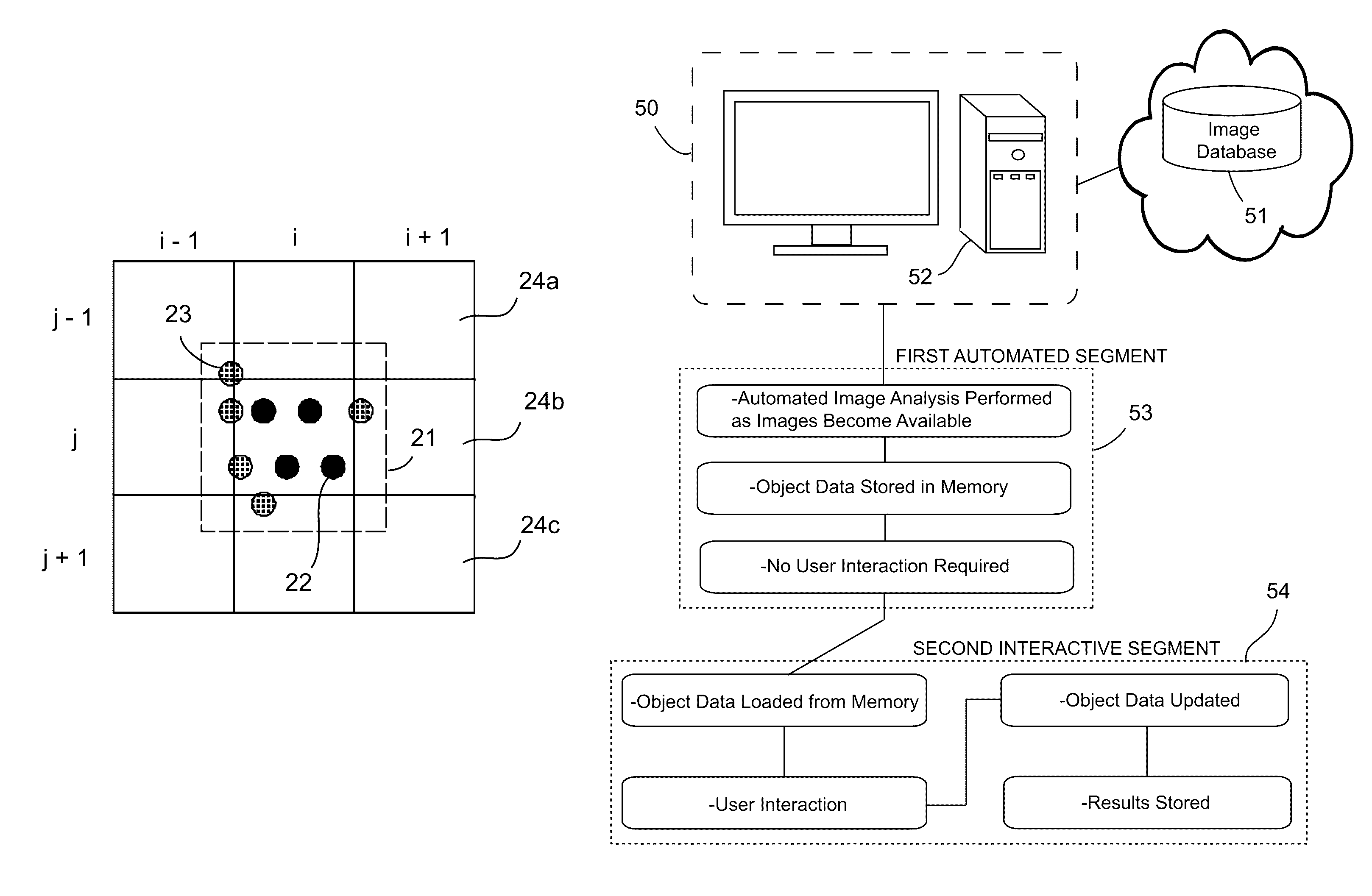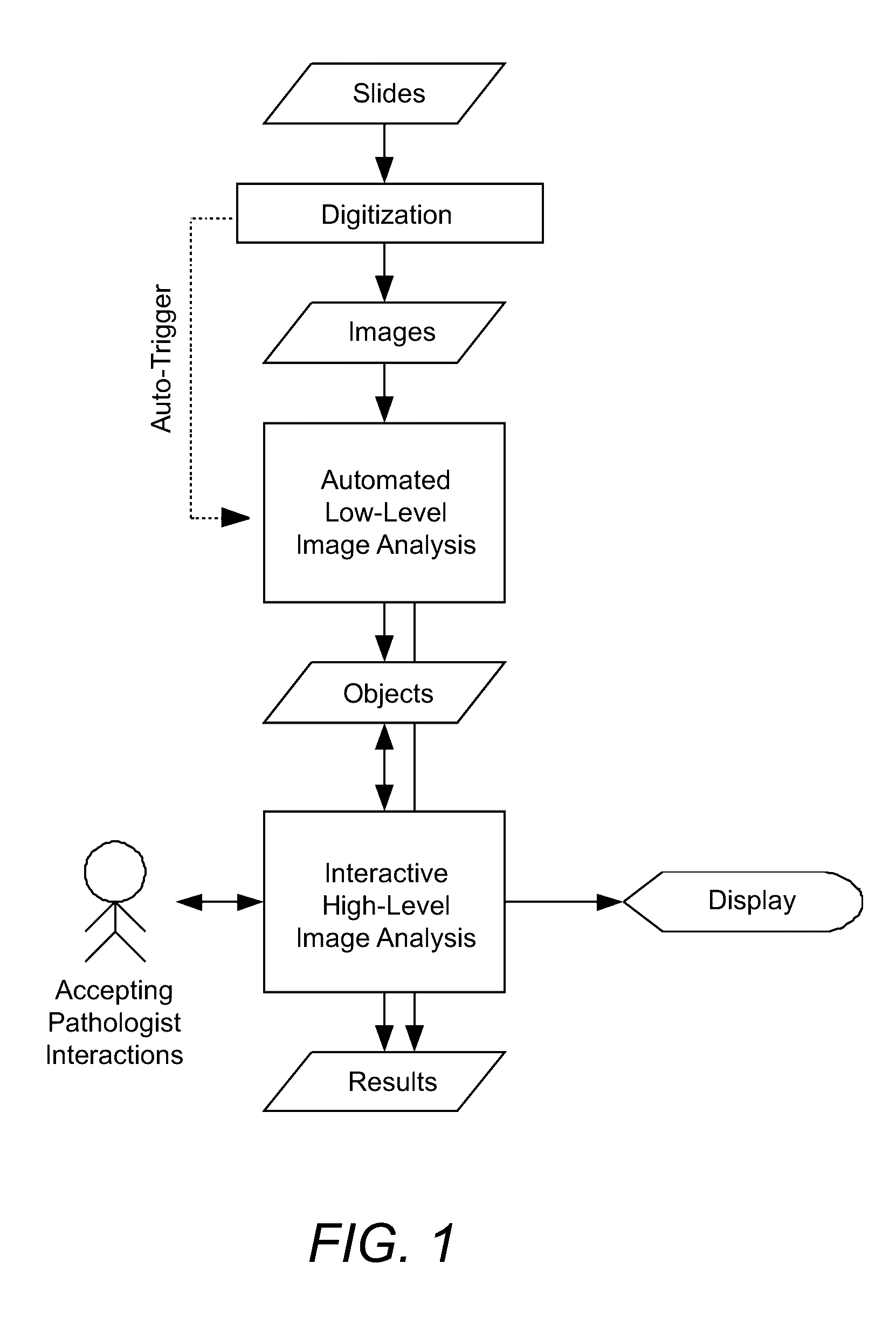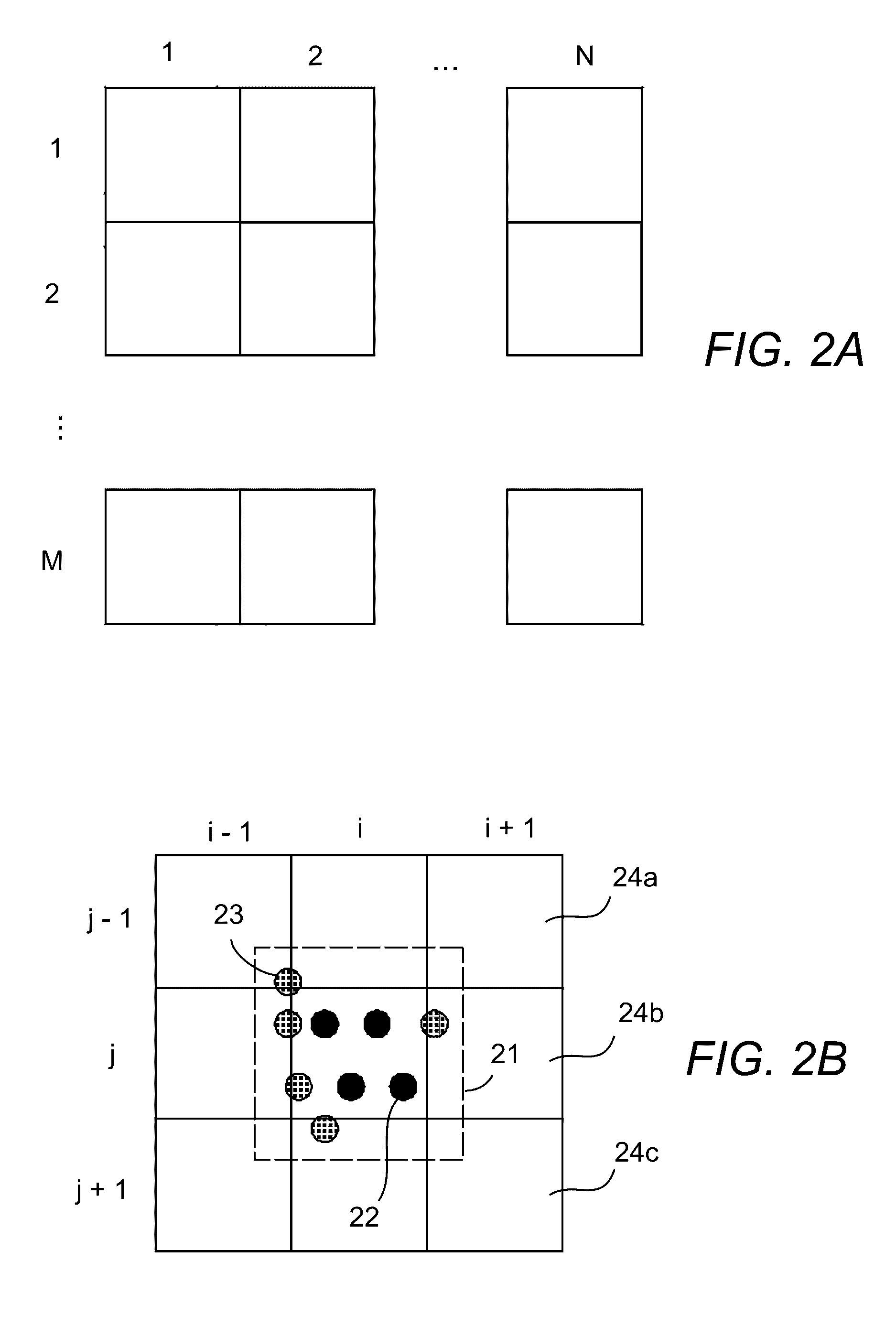Systems and methods for interactive image analysis of digital pathology images
- Summary
- Abstract
- Description
- Claims
- Application Information
AI Technical Summary
Benefits of technology
Problems solved by technology
Method used
Image
Examples
example
[0050]For illustrative purposes, one example may include the quantitative analysis of progesterone receptors in breast tissue. The image analysis task that needs to be performed consists of detecting the nuclei of invasive tumor cells, measuring the mean optical density of the progesterone preceptor staining on the nuclei and then classifying the nuclei into 4 categories (0—negative, 1—low positive, 2—medium positive, and 3—high positive) based on the amount of progesterone preceptor staining. From the percentages of nuclei in the different categories an H-score is calculated, which essentially is the average category of the nuclei times 100. The program is not able to detect the invasive tumor cells automatically, therefore a user needs to determine which of the cells are invasive tumor cells.
[0051]The automated low-level image analysis program detects all nuclei on the entire slide, quantifies the progesterone preceptor staining and provides the classification of the nuclei. The o...
PUM
 Login to View More
Login to View More Abstract
Description
Claims
Application Information
 Login to View More
Login to View More - R&D
- Intellectual Property
- Life Sciences
- Materials
- Tech Scout
- Unparalleled Data Quality
- Higher Quality Content
- 60% Fewer Hallucinations
Browse by: Latest US Patents, China's latest patents, Technical Efficacy Thesaurus, Application Domain, Technology Topic, Popular Technical Reports.
© 2025 PatSnap. All rights reserved.Legal|Privacy policy|Modern Slavery Act Transparency Statement|Sitemap|About US| Contact US: help@patsnap.com



